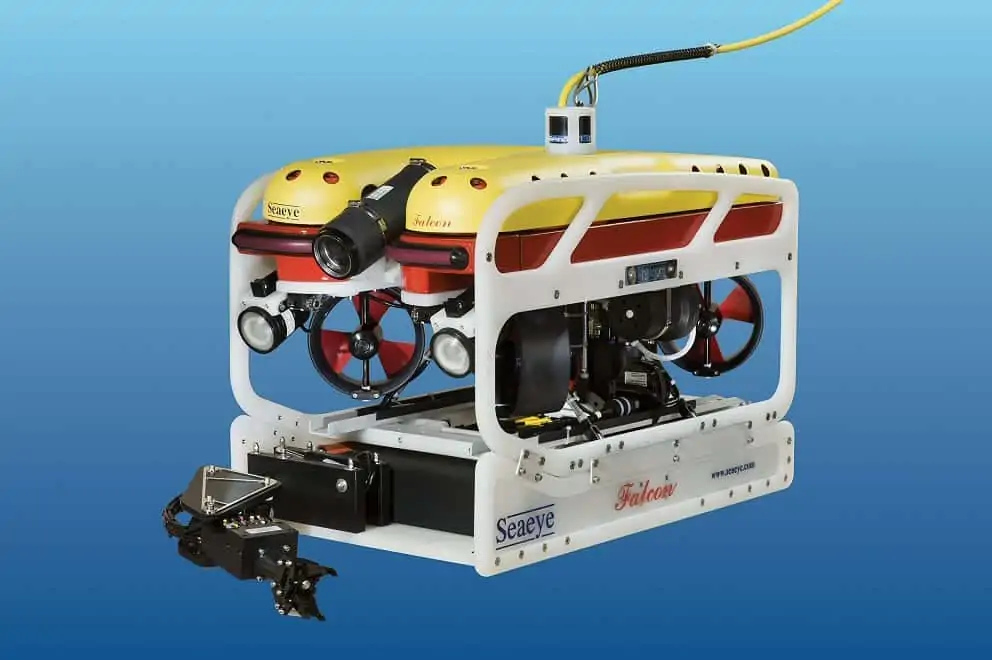Saab Seaeye has announced that it has upgraded its Falcon underwater electric robotic vehicle. The Falcon’s smart intelligent control system has been enhanced with Saab Seaeye’s advanced iCON behaviour-based intelligent control architecture. This means that the Falcon can now host many new features, making it an advanced platform for further automation and behaviour-based software development.
Station‐keeping and fine position adjustment is an important new attribute that reduces the operator’s workload by allowing them to concentrate on the task at hand. Fitting a Doppler Velocity Log (DVL) and interface node has made this possible. It is also now possible to add higher accuracy sensors for heading, depth and altitude.
The iCON enhancement is available on all new Falcons, or as an upgrade to existing vehicles. It comes as a new design surface control console that incorporates the iCON software – already a feature of Saab Seaeye’s successful Leopard work system.
The new control console features a wide, high-resolution touchscreen monitor, customisable graphic user interface and an ability to record video and still images. It also offers user-friendly system configuration and diagnostic pages. iCON’s building block simplicity is key to the company’s ongoing success as it allows harmonious migration of technology throughout Saab Seaeye’s range and is currently accelerating new systems development.
The Falcon’s concept comes from a careful balance of five powerful thrusters and an intelligent distributed control system in a small, easily manhandled 1 x 0.5 x 0.6 metre size versatile chassis. Its power and control make it highly manoeuvrable and able to master strong crosscurrents whilst undertaking precision tasks with steadiness and precise manoeuvrability.
Introduced in 2002, the Falcon’s pioneering distributed intelligence provides each device on the vehicle with its own microprocessor, thereby allowing tools and sensors to be easily added or changed, and custom options to be integrated – making it an ideal platform for numerous intricate and demanding applications.
The Falcon range is available in 300 and 1000 metre depth ratings and can undertake a vast range of widely varying tasks across many key market sectors.



















